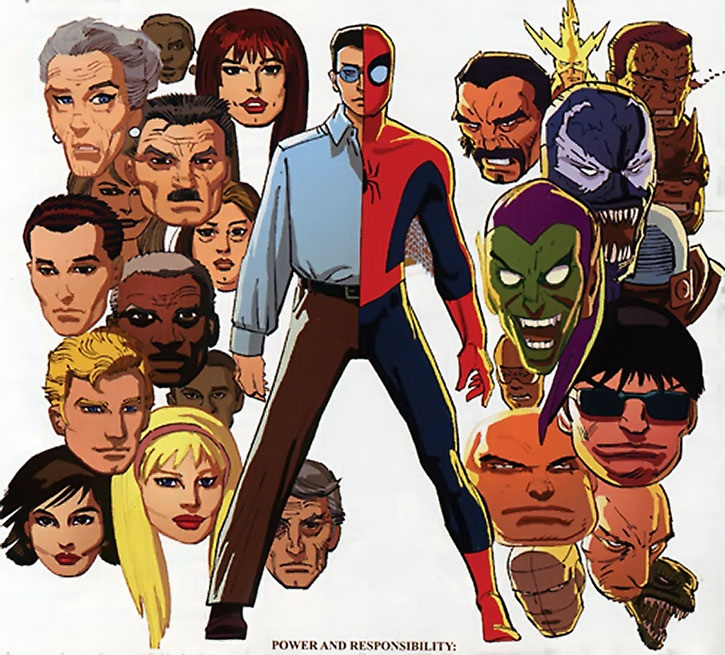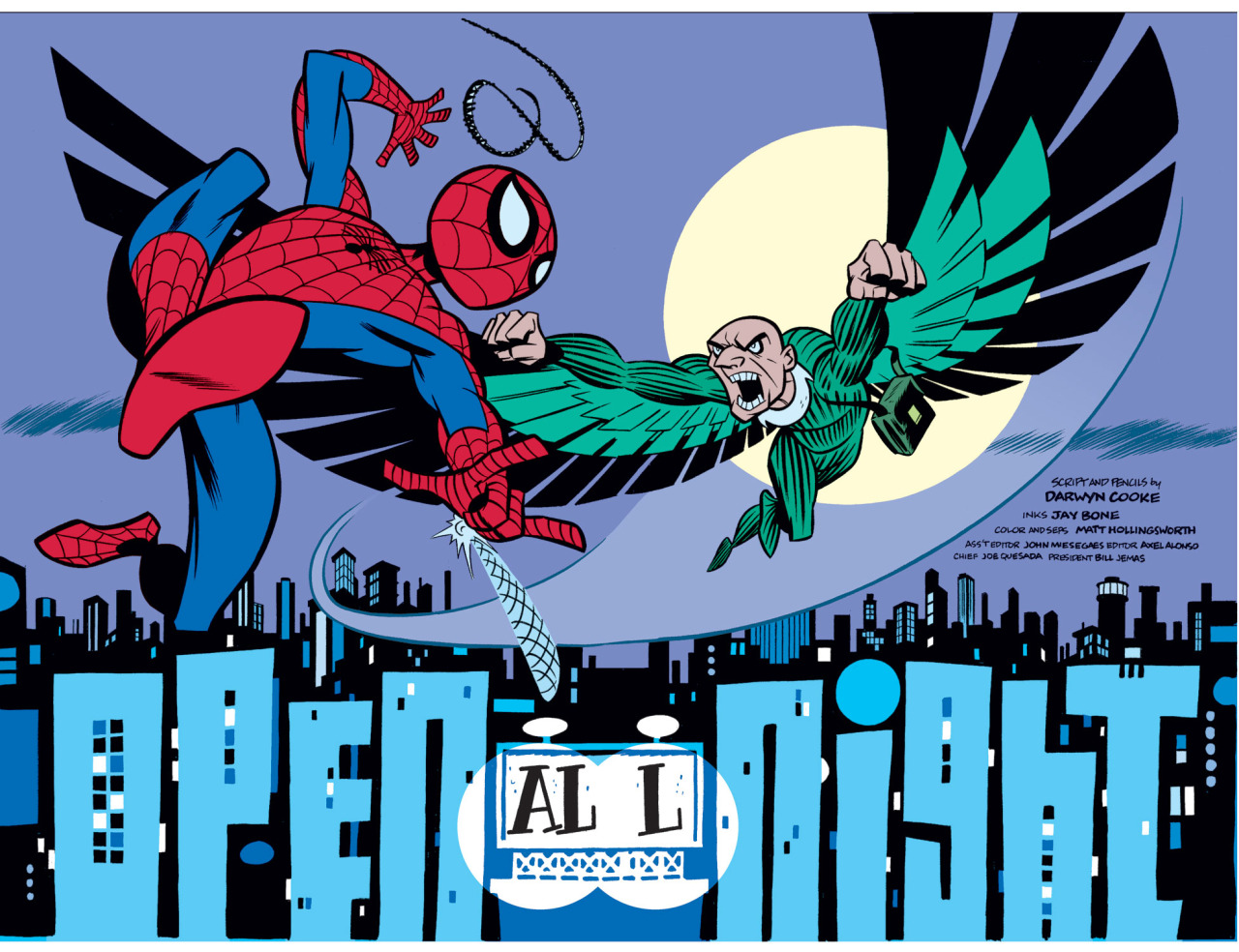Last time, I reviewed the first 15 issues of Spider-Man the Manga by writer Kōsei Ono and artist Ryoichi Ikegami. The series takes a turn with the arrival of the new writer Kazumasa Hirai. The first few volumes focused on familiar villains from the comics, but these stories went in a new direction with an emphasis on crime dramas, and youth rebellion popular in the then-contemporary Japanese New Wave film movement.

Spider-Man the Manga #16-18: Things are immediately different as Yu Komori—this version of Spider-Man—is mistaken for a sexual predator and he takes the blame, aware that the real attacker is a popular athlete. He joins the school’s kendo (a variation of martial arts with bamboo swords) club to bait a response.
I know this is manga, but the pacing is odd. Sometimes it’s leisurely, and sometimes it seems rushed. The developments are a bit clumsy, and I’m not sure how much of it is the translation, and how much of it is the source material.
It is undeniably interesting to have a more reckless Komori. This is a story where he is much tougher than the others and knows it. There’s a bit of a James Dean style youthful loner thing going on with the approach to Komori, which is an interesting take on Spider-Man. It’s worth checking this arc out to see what other directions Marvel could have taken Spider-Man, instead of what they settled on. The manga creators have a blank slate here with limited expectations and editorial oversight, and they do some interesting stuff. The later volumes get better.
B-

Spider-Man the Manga #19-21: This was my first time reading this arc. It kicks off with a very relatable scene of Yu Komori trying to go to the beach with his friends, stuck in a traffic jam in a hot day and fantasizing about using his powers as Spider-Man to smash all the cars in his way. The difference is that he can actually do it. It sets up a theme for the story, which fits pretty well with some of the questions in the silver age Spider-Man comics of the downside of the adolescent power fantasy typical in superhero stories.
Komori and his friends stumble upon a dangerous situation, which is probably my least favorite trope in serial fiction, barely surviving an encounter with an armed homicidal motorcyclist. Komori realizes the similarity between his power and what a man with a gun can do. Everything escalates. Komori’s inaction in some scenes is excessive, although things occur so quickly that it is understandable. There is raw emotion to the story which builds on Komori’s character as reluctant superhero.
B+
There seemed to be a new story “What is My Destination!” that was published in between these arcs in Japan. The next volumes take a more supernatural trajectory.

Spider-Man the Manga #22-24: This arc begins with Komori following his spider-sense to a ghostly woman with the power to freeze things, and I’m really happy to see a story where he doesn’t stumble into new situations, and instead has the agency to investigate situations where his power may be needed, to go and make a difference. There isn’t any explanation about where the antagonist got her power, although it has a horror movie logic. A rake is cartoonishly evil. But there are some powerful sequences, and the story hits the right balance between Komori’s hesitation (indecisiveness is a core trait of the Peter Parker Spider-Man) and the realization that he’s the only one who can stop a menace. The problem is that his main option may be to take the life of a woman who is doing great harm, but isn’t fully responsible for it. This is probably my favorite storyline in the series.
A-
At this point, the translations skip ahead a few more volumes. One reason may be that sales were low and Marvel figured a story about Spider-Man facing a doppleganger was more commercial than the alternatives. It is worth noting that when this story was published in Japan, the American Spider-Man was a decade away from encountering Venom, and hadn’t even been cloned yet.

Spider-Man the Manga #25-30: Yu Komori donates blood to Mitsuo, a young man injured in a serious train accident. His blood was necessary because he has a relatively rare type (AB.) It’s worth noting that blood type personality theory is a big deal in Japan, and there is discrimination against people with AB or B type blood. It’s a bit like horoscopes in the United States, except it’s significant enough that politicians want to mention it in campaigns, or use it as an excuse for bad behavior (which does not help with the discrimination). This is a revelation American readers will largely ignore, that Japanese readers may view as a definitive character trait.

Komori is constantly reminded of the death of love interest Rumi, which occurred in one of the stories Marvel decided not to publish—more on that in a future entry. He’s worried that he may have passed his powers on to Mitsuo, and hangs out more with the guy just to be sure. Mitsuo is a jerk, but he’s more complex than that. His sister Yukiko becomes a love interest to Komori, although their lives are messier than what Spider-Man fans are used to seeing from Peter Parker’s supporting cast.
There’s an interesting take on spider-sense and dreams, which serves as a window into different directions Marvel could’ve taken Spider-Man. The story drags a bit in the middle, as the inevitable happens and it appears that Mitsuo has powers similar to Spidey, but he’s using them for evil. They try to make it a mystery, which doesn’t quite work.

The story gets better when Mitsuo realizes that Komori is Spider-Man, and starts a late ’60s/ 1970s agitpop style campaign against polluters, gaining him the support of the public, even if it’s mainly about his personal agenda. We don’t see the rest of Komori’s supporting cast here, which is unusual for a story about a supervillain who learns Spidey’s identity. Komori’s involvement with this family works for the story of a young man who is trying to understand his place in the world. I like that part of the story is Komori trying to understand his enemy, and there are some interesting and dark twists as family secrets emerge, before Komori is pushed to the limit against someone who has his powers.
B+

Spider-Man the Manga #31: For the last issue, Marvel published the first section of an earlier story, written before the imposter arc. A young woman is miserable in the big city. Something big is causing things to collapse. Yu Komori follows the girl, and when she witnesses a crime, he is kidnapped along with her. And that’s it. Tonally, it’s quite interesting, but it is impossible to review because it’s the first section of a story without any further context.
Grade: Incomplete
It ended suddenly. It’s odd that Marvel never went back to this series. Manga only became more popular in the 2000s, which was also when the trade paperback market took off, so it seems like an obvious opportunity for a second try, especially if they had gone through the work of translating enough material for multiple volumes.
Next-up we’re going to look at why they might’ve ignored Spider-Man work by a major manga talent.








